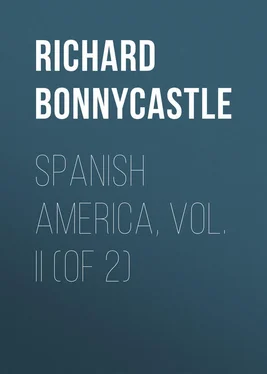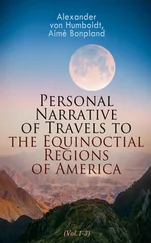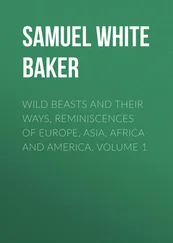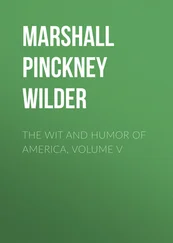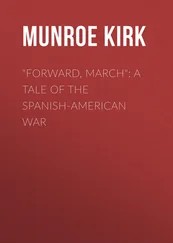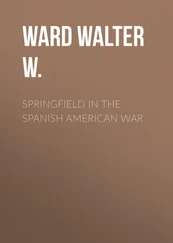Richard Bonnycastle - Spanish America, Vol. II (of 2)
Здесь есть возможность читать онлайн «Richard Bonnycastle - Spanish America, Vol. II (of 2)» — ознакомительный отрывок электронной книги совершенно бесплатно, а после прочтения отрывка купить полную версию. В некоторых случаях можно слушать аудио, скачать через торрент в формате fb2 и присутствует краткое содержание. Жанр: foreign_antique, foreign_prose, на английском языке. Описание произведения, (предисловие) а так же отзывы посетителей доступны на портале библиотеки ЛибКат.
- Название:Spanish America, Vol. II (of 2)
- Автор:
- Жанр:
- Год:неизвестен
- ISBN:нет данных
- Рейтинг книги:4 / 5. Голосов: 1
-
Избранное:Добавить в избранное
- Отзывы:
-
Ваша оценка:
- 80
- 1
- 2
- 3
- 4
- 5
Spanish America, Vol. II (of 2): краткое содержание, описание и аннотация
Предлагаем к чтению аннотацию, описание, краткое содержание или предисловие (зависит от того, что написал сам автор книги «Spanish America, Vol. II (of 2)»). Если вы не нашли необходимую информацию о книге — напишите в комментариях, мы постараемся отыскать её.
Spanish America, Vol. II (of 2) — читать онлайн ознакомительный отрывок
Ниже представлен текст книги, разбитый по страницам. Система сохранения места последней прочитанной страницы, позволяет с удобством читать онлайн бесплатно книгу «Spanish America, Vol. II (of 2)», без необходимости каждый раз заново искать на чём Вы остановились. Поставьте закладку, и сможете в любой момент перейти на страницу, на которой закончили чтение.
Интервал:
Закладка:
The conuco or common plantation contains maize, the sugar cane, culinary plants, and coffee trees. Near this valley is the cavern of the Guacharo, three leagues from the convent towards the west. This cave gives its name to the range of mountains in which it is situated. The cavern is pierced in the face of the perpendicular side of the lofty Guacharo mountain, the access to its mouth being rather difficult, on account of the numerous little torrents which cross the valley. Its entrance is towards the south, and forms an arch eighty feet broad, and seventy-two high, surmounted with rocks, covered by gigantic trees; festoons of creeping plants throw themselves across the chasm, and variegate the scene with the beautiful and vivid tints of their flowers; a river issues from the vault which continues at the same height as at its entrance for a considerable distance; and arums, heliconias and palms, follow the banks of the stream for thirty or forty paces into the interior. It is not necessary to use torches for 430 feet from the mouth, as the grotto keeps the same direction, and forms but one channel from south-east to north-west; when the day-light fails, the hollow murmuring sound of a vast number of nocturnal birds, inhabiting the recesses of the cave, may be distinguished; advancing further by the help of lights the whole rock is seen covered with the nests of these birds, which are called Guacharoes, and are of the size of a fowl, with a crooked bill, feathers of a dark bluish grey, mixed with specks of black, the head, wings and tail, being studded with large white heart-shaped spots edged with black; the spread of the wings is three feet and a half; its eye, which is blue and small, cannot endure the light of day, these birds quitting the cavern only at night in search of the fruits on which they exist; their nests are seen by fixing a torch at the end of a pole, and are generally on the very highest parts of the arch.
The Indians enter this cave once a year to destroy the young for the sake of a layer of fat, with which the abdomen is covered. These people construct temporary huts at the mouth of the cavern, and melt the fat in pots of clay, over brushwood fires; this fat is called the butter of the guacharo, is transparent, half liquid, without smell, and so pure as to keep more than a year without becoming rancid; the monks purchase this oil of the natives for culinary purposes. Notwithstanding this annual destruction of the birds, their numbers do not sensibly diminish, as it is conjectured that other guacharoes re-people the grotto from neighbouring caves, which are inaccessible to man.
The river which runs through the cave, is from twenty-eight to thirty feet in width, and can be traced into the recesses for a considerable distance, the cave preserving its altitude and regular form for 1458 feet; farther than this the river forms a small cascade over a hill covered with vegetation; and surrounded with stalactites; after this ascent the grotto contracts its height to forty feet, still preserving the same dimensions; here the bottom is covered with a black mould on which plants, deposited accidentally by the birds, have vegetated; their characters are however so much changed by want of light and air that it is impossible to recognise the species. Beyond this spot the cries of the birds were so shrill and piercing that no persuasions could induce the Indians to proceed, and M. De Humboldt was obliged unwillingly to return.
This subterraneous river is the source of the Rio Caripe, which joining the river Santa Maria a few leagues distant, is navigable for canoes, and falls into the river Areo under the name of Canno de Terezen.
The forests of this and of every other part of Cumana are peopled with numerous tribes of monkeys, of which the araguato is the most common and singular; it is three feet in height from the top of the head to the tail, with a reddish brown bushy coat of fur which covers its whole body, being very fine on the belly and breast; its face is of a blackish blue, and covered with a delicate wrinkled skin; the beard long, and its eye, voice and gait, denoting melancholy; when domesticated they have not that vivacity which most monkeys are celebrated for; on the rains, or any sudden change of weather approaching, the howling noises made by this creature are beyond conception dismal, and add, during a storm, to the horrors of the uninhabited wilds in which the traveller finds himself alone, and unprotected.
Near Cumana, at the farther end of the gulf of Cariaco, is the little town of Cariaco , in the middle of a large plain filled with plantations, huts and groups of cocoa and palms; on a hill behind this town, at some distance, and named Buenavista, may be seen the range of mountains which stretch towards the east under the names of Sierra de Paria and Areo; from this hill it is said the most extensive view is to be had which can be seen on the coast of Cumana.
The town of Cariaco is small and very unhealthy, owing to the great heat of the climate, the humidity arising from the surrounding plains and the exhalations from the shallow mere or lake Campona.
The number of inhabitants of this town amounted in 1800 to 6000, and the population is on the increase. Its chief commerce is in cotton of a fine quality; Cumana and Barcelona exported 18,000 quintals of this article in 1800, of which the town of Cariaco furnished six or 7000. Cacao is also attended to, but the cultivation of this plant does not flourish. The sugar cane has of late become an object of much speculation at Cariaco, where considerable quantities of it are now grown.
From Cariaco the gulf stretches to Cumana, its northern shore being naked, dry, and rocky, while the south coast is covered the whole way with plantations of cocoa nut trees; and between Cumana and Cariaco is the small village of Mariguitar , seated in the midst of these plantations.
Eastward of Cariaco the range of mountains continue to bend towards the promontory of Paria; they contain in their bosom, a short distance from Cariaco a large lake, four or five leagues in diameter, called Putacuao, which communicates with the river Areo. These mountains are visited only by the Indians, and are haunted by the great boa serpent. This part of Cumana, as well as all the country lying towards the east, is nearly uninhabited by Europeans, but a new town has lately been founded at Punta de Piedra, opposite Spanish harbour in Trinidad; and people are daily forming settlements along the coast and in the fertile valleys of the interior; of which, Concepcion del Pao , forty-five leagues south of Barcelona, fifty-five from Cumana, and twenty-eight south-east of Caraccas, has lately been raised to the rank of a city, and contains 2300 persons, mostly proprietors of cattle and land in the northern plains of the Orinoco.
The provinces of Barcelona and Cumana contain about 100,000 inhabitants, of which the Indians compose more than one-half, 24,000 inhabiting New Andalusia alone, without including the Guaraounoes of the islands of the Orinoco; and who, as it were, command the mouths of this fine river, which extend along the sea-coast for more than sixty leagues. These mouths are very numerous, but seven of them only are navigable. The first of these is twelve leagues south of the mouth of the Rio Guaripiche, and is called Grande Manamo . The second is two leagues south-east of the first, and is named Canal de Pedernales ; on the east of it is the island Guarispa, and three leagues south-west is Isla del Soldado, at the south entrance of the gulf of Paria; these two channels are too shallow for large vessels.
The third is called Capure , and is a branch of the second, detaching itself about seven leagues inland.
The fourth is Macareo , six leagues south of Capure, navigable for schooners and brigs, and the principal outlet between Guiana and Trinidad, its mouth being opposite Erin river in that island.
Читать дальшеИнтервал:
Закладка:
Похожие книги на «Spanish America, Vol. II (of 2)»
Представляем Вашему вниманию похожие книги на «Spanish America, Vol. II (of 2)» списком для выбора. Мы отобрали схожую по названию и смыслу литературу в надежде предоставить читателям больше вариантов отыскать новые, интересные, ещё непрочитанные произведения.
Обсуждение, отзывы о книге «Spanish America, Vol. II (of 2)» и просто собственные мнения читателей. Оставьте ваши комментарии, напишите, что Вы думаете о произведении, его смысле или главных героях. Укажите что конкретно понравилось, а что нет, и почему Вы так считаете.
